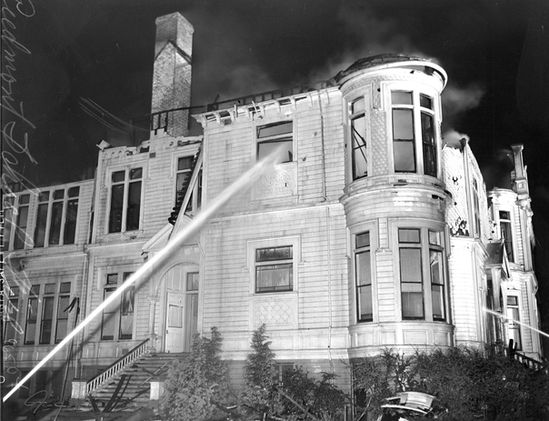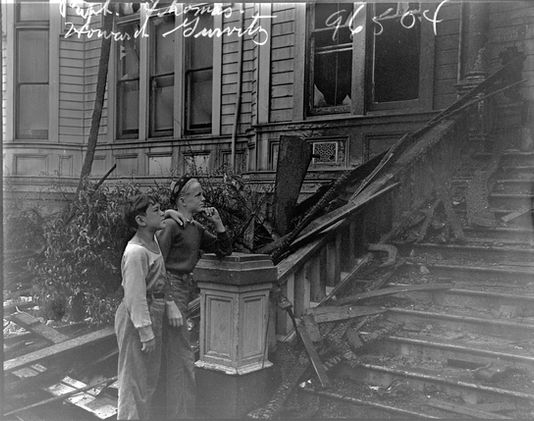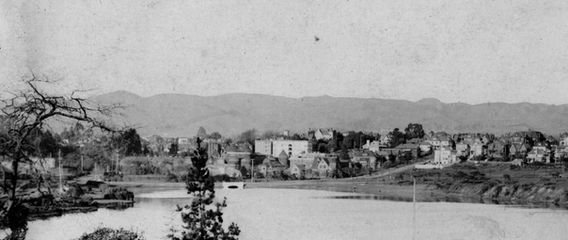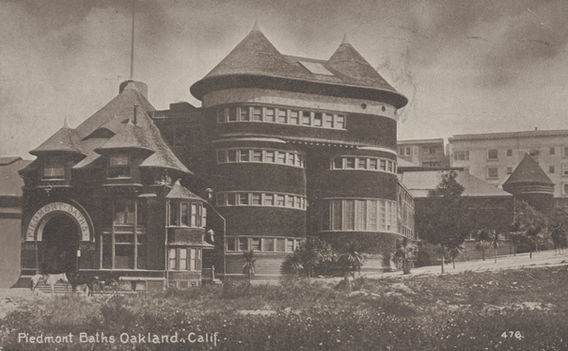Piedmont, but not Piedmont
There are a few places around the Bay Area that can be a bit confusing because they are/were named Piedmont but are not actually in Piedmont.
Oakland Tribune - Sunday - September 11, 1960:
Although Piedmont Avenue today barely reaches the Piedmont city lines beyond Pleasant Valley, there was a day when Piedmont Avenue had as much or more mileage within Piedmont's city limits. It ranged northeast from Pleasant Valley to what was called Bushy Dell, continuing on south of Piedmont Terrace to cross Hillside, Bonita, Vernal (now Highland Avenue), and Wita Avenues. Prior to that, the Piedmont Avenue Oaklanders know today was first called Webster Avenue, and then Cemetery Avenue.
Piedmont Ave
Originally called Webster Street and in Piedmont there was a street called Piedmont Ave in Piedmont.
The Piedmont Avenue neighborhood was founded in the late 1800s. It developed after Mountain View Cemetery opened in 1863, bringing visitors and public transportation.The area was annexed into Oakland in 1897.

Oakland Tribune - Sun - Feb. 16, 1969
Piedmont Avenue School
There was a two-room schoolhouse up closer to the Mountain View Cemetery. Classes we held for a time at the home of G.W. Hume, who lived in a large estate where the school is located now.
The school at that time was used by both children from Piedmont and Oakland. The building was designed by William Kirk and cost about $10,000 to build. The school had a bell tower with a 350-pound bell. There was a large assembly room, a library, a hothouse for plants, classrooms on both floors, and a large lighted basement where the children could play during wet weather.
In July of 1938, while the students were on summer break, the school was destroyed by a fire that was considered arson. Ten firemen were injured four of them seriously.
Piedmont Grocery
Piedmont Grocery is family owned grocery store located in North Oakland on Piedmont Avenue. Herman Sack and his wife Eugenia opened the Piedmont Grocery in 1902 on Piedmont Avenue at 41st Street. Following an earthquake and fire which destroyed the first store, they relocated to the current location.
Longtime employee Charles Larson bought the business in 1957. Today, David Larson (Charles Larson's son) runs the Piedmont Grocery along with his daughter Amy Pence.
Piedmont Baths
Piedmont Baths
In a 1913 photo, the long-gone Piedmont Baths is at right. At left you can see part of the cable car building that now houses Whole Foods. In a salute to the old, two new palm trees have been planted in front.
Piedmont Baths (1890-1939?) was a swimming complex at Bay Place and Vernon Avenue (currently the lower parking lot of Whole Foods Market). An imposing brick structure comprising a natatorium with galleries, dressing rooms, hot tubs, massage areas, and a café, it was built by a consortium of local developers and investors hoping to promote interest among (pre-Earthquake) San Franciscans (who at the time had no such facility of their own) in the appeal of East Bay living.
Until 1904, the baths exploited waste steam heat from the cable-car powerhouse next door to heat the swimming tank. The salt water to fill it was drawn, alternately, from Lake Merritt and the Oakland Estuary, depending on the direction of tidal flow. Lake and estuary waters were pumped to a height of fifty feet, then gravity-fed through a “system of strainers” and one of the first implementations of charcoal, sand, and gravel filters of the Hyatt Patent. This claimed to rid the water of any solid matter or lingering “gasses”.
The therapeutic and recreational program claimed to account for “every variety of bathing appliances known to civilization” including a swimming tank of 70×120 feet, salt and fresh water tubs, barbershop, café, Turkish and Russian baths, springboards, trapeze, and a candy stand.
In October 1927, a major fire badly damaged the buildings, doing an estimated $100,000 in damage. Police and employees of Don Lee scrambled to move $350,000 of cars out of the nearby dealership.
Piedmont Rink / Piedmont Pavillion
Piedmont Rink / Piedmont Pavillion
Located in Oakland

This article makes it sound like it was in Piedmont.
Oakland Tribune - Sat - Jun. 23, 1906
Sharing
Places Piedmont Shares with Oakland:
-
-
Learn more here.
-
Oakland Tribune - Tue - June 13, 1911:
Whereas, the City of Oakland has declared its intention of acquiring for park purposes that portion of the property known as the Stanford Tract, No. 2, bounded on the east by Pleasant Valley Tract and Olive avenue, part of which is situated in the city of Piedmont, and bounded on the northwest by Linda Vista Terrace, and on the southeast by Stanford tract, with an area of about eight acres, plus; and
"Whereas, to provide a proper, sufficient and handsome entrance to this tract at the northerly corner, which is situated in the city of Piedmont, it will be necessary for the city of Piedmont to acquire certain lots at the southern corner of Olive avenue and Oakland avenue; therefore "Be it resolved, that as a contribution toward the park property, to be provided for by the city of Oakland, the city of Piedmont hereby undertakes to acquire title to these certain lots at Olive and Oakland avenues, aforesaid, for park purposes." Certified to by F. J. Staiger, city clerk of the city of Piedmont.
-
-
-
-
East Bay Times, Nov. 26, 2007:
-
Davie belongs to Oakland, but, uniquely, its property also includes Piedmont. In fact, the Piedmont city line runs directly through Davie’s five courts, right between courts three and four, making it possible to hit an errant backhand from one city to another, in either direction.
-
-
-
-
Until 2008, Piedmont - which has no libraries of its own - paid Oakland $350,000 a year for library services. When the contract expired, Oakland asked to raise the fee to $395,000 a year, in part to cover a steep rent increase at the branch used most by Piedmont residents, the Piedmont Avenue Branch.
Piedmont countered with a less expensive offer, the same $350,000 but with a 5 percent annual increase over five years.
Oakland said no. Negotiations have been stalled for at least a year, during which Piedmont stopped paying Oakland anything.
[...]
Furthermore, Piedmont would not be receiving extra benefits - such as its own branch or a bookmobile - if it agreed to pay the amount Oakland requested.
In fact, it would receive the same benefits whether it paid $395,000 a year or nothing at all, he said.
"There's no increase in their costs to serve little Piedmont," he said. "Most of the money they collect from us is pure profit."
-






























